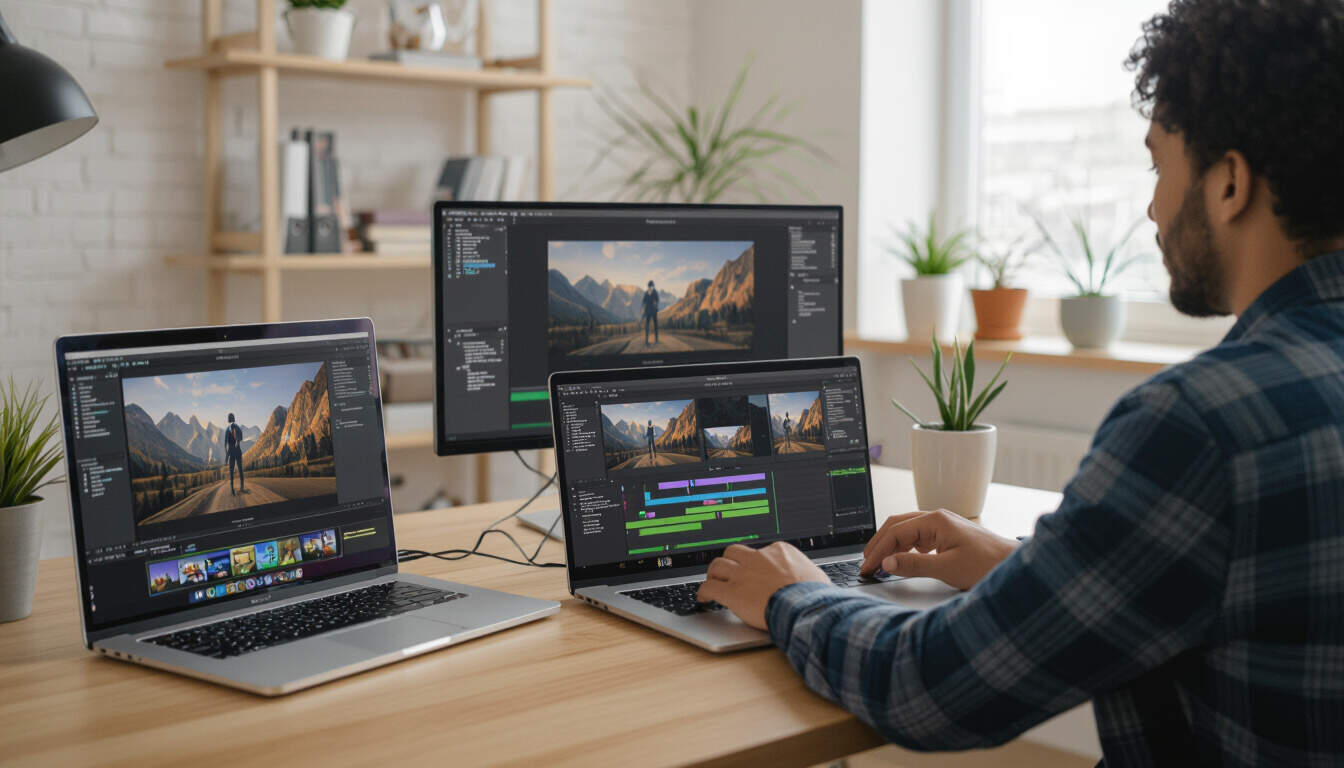Video Editing Tools for Remote Content Creation
 by Thaddeus Blanda
by Thaddeus Blanda
Explore how video editing enhances remote work by boosting productivity and fostering collaboration. This article covers essential tools, techniques for team projects, and strategies for maintaining balance in a remote setup, making content creation more efficient for professionals.

Remote work has transformed how professionals handle tasks, and video editing plays a key role in content creation. Many remote workers use video editing to produce engaging materials for their jobs. This process helps in sharing ideas clearly during virtual meetings.
For remote workers, selecting the right tools is essential. Software like Adobe Premiere Pro or Final Cut Pro offers features that streamline workflows. These programs allow users to cut footage quickly and add effects without needing office resources. One advantage is the ability to work from anywhere, which suits freelancers who travel.
In a remote setup, productivity tools like video editing software can save time. For instance, basic edits might take only minutes with intuitive interfaces. This efficiency lets workers focus on other tasks, such as client communications. A simple timeline feature helps organize clips, reducing frustration during long sessions.
Virtual team collaboration often involves sharing video content. Platforms like Google Drive enable teams to exchange edited files easily. When a group works on a project, one member can handle the initial edit while others provide feedback. This method ensures everyone contributes, even from different locations.
Benefits of Video Editing in Remote Environments
Using video editing in remote work offers several advantages. First, it supports content creation for marketing or training purposes. Businesses can produce tutorials that explain complex topics without in-person sessions. These videos become valuable assets for ongoing reference.
Another benefit is improved communication. Remote workers can edit videos to include subtitles or voiceovers, making messages accessible to all team members. This approach helps overcome language barriers in global teams. By preparing content in advance, workers avoid last-minute rushes.
Work-life balance is crucial for those in remote roles. Video editing tools with automation features, such as auto-sync, allow tasks to be completed faster. This means less time spent on edits and more time for personal activities. For example, a freelancer might finish a project early and enjoy a break.
Tips for Effective Video Editing in Remote Work
To get the most from video editing, start with planning. Outline the video structure before beginning, which includes key scenes and transitions. This step prevents wasted effort and keeps the process smooth.
Consider using free or affordable software options. Tools like DaVinci Resolve provide professional features without high costs. These alternatives are ideal for beginners or small teams starting out. Once familiar, users can experiment with advanced functions to enhance their output.
Collaboration tools integrate well with video editing. For instance, Slack or Microsoft Teams can handle file sharing alongside edits. This integration keeps projects on track and allows real-time input from colleagues. Remote managers find this helpful for monitoring progress without daily check-ins.
In terms of skills, learning basic video editing techniques is straightforward. Online courses offer quick lessons on editing basics, which remote workers can complete at their own pace. Building these skills leads to better content and more job opportunities.
Challenges and Solutions
Some challenges arise with video editing in remote settings. Internet issues can slow down uploads, for example. To address this, workers can edit offline and upload during stable periods. Another issue is hardware limitations, like insufficient computer memory. Upgrading equipment or using cloud-based tools can resolve these problems.
Maintaining focus is important too. Remote environments might have distractions, so setting a dedicated workspace helps. During editing sessions, minimizing interruptions ensures higher quality results.
For virtual team projects, clear guidelines are necessary. Assign roles early, such as who handles audio or visuals. This division of labor makes collaboration smoother and reduces conflicts.
Overall, video editing enriches remote work by enabling creative expression. It empowers freelancers to build portfolios and businesses to engage audiences effectively. As remote setups continue, embracing these tools will remain vital.
In summary, incorporating video editing into daily routines brings tangible benefits. It enhances productivity, supports team efforts, and promotes a healthier balance. By adopting these practices, remote professionals can thrive in their roles.
